Salvatore Napolitano , Antonio Ascione
Department Physical Education and Wellness, University of Naples “Parthenope”, Naples, Italy
Correspondence to: Salvatore Napolitano , Department Physical Education and Wellness, University of Naples “Parthenope”, Naples, Italy.
| Email: |  |
Copyright © 2017 Scientific & Academic Publishing. All Rights Reserved.
This work is licensed under the Creative Commons Attribution International License (CC BY).
http://creativecommons.org/licenses/by/4.0/

Abstract
Introduction: Water polo lacks a shared analysis for tactics chooses because of high influence of discretion. So, it could be useful to study on tactical aspects in competition. Aim: Aim of the work is to verify the efficacy of different attack patterns, in order to start up an investigation water polo tactics. Method: Method is integrated by 3 distinct approaches. 1 case study on descriptive, 2 action research method for coach contribution in order to give a relation tactics training and tactics in competition, 3 theoretical-argumentative approach to deduce a framework in which process the data to aim the correlation between outcomes and tactical aspects. The data are collected by Kinovea system. Results: For every athlete twenty have been selected frame, for total of 386. Data were compared to with the provided by coach and schemas for every athlete has been elaborate a sequence of image in order to determine the correct application indications dates in training. For each athlete based on the results obtained from the analysis of the data collected have been identified its strengths and weak points of their approach to tactical situations of the game, so it was possible to elaborate a methodology coded and personalized tactical training. Conclusion: The results showed a general efficacy of tactical patterns, but showed significant differences within correlation coefficients of single patterns. A more consistent data base is needed, in order to establish direct, evident and general relationship between so calculated coefficient and pattern efficacy, and the research team is conscious of internal validity of this kind of qualitative analysis, which can't extend, without adjustments, to other teams.
Keywords:
Tactic, Water polo, Video- analysis
Cite this paper: Salvatore Napolitano , Antonio Ascione , Study of Individual Tactis in Water Polo Throug Video Analysis, International Journal of Sports Science, Vol. 7 No. 5, 2017, pp. 203-208. doi: 10.5923/j.sports.20170705.05.
1. Introduction
Water polo is a sporting situation, the tactical aspect plays a key role. This work, based on video analysis of sports performance, is an attempt to analyze the correct application of the tactics that a coach imparts to his team.18 matches of the National Women's Water Polo Series A1 Championship were analyzed by a coach assisted by a statistician and a performance analyst.The purpose of this research was to identify individual events to evaluate the correct application of the schema foreseen in these phases of the game and then to relate conformity to the outcome of the event.
2. Aim
The work objective was to verify if the different attack patterns in numeric superiority, when they were well executed, have led to the expected results in order to create a methodology of training model. The data were collected through the Kinovea system.The results show a positive and statistically significant correlation coefficient between tactical compliance and outcome of the events.
3. Method
The research approach is integrated and consists of 3 distinct methods: ü Case study (18 matches of the Italian Serie A1 Women's Championship, season, played by the Volturno s.c.) for the analysis of matches,ü action research method for coach contribution, ü and theoretical-argumentative method to deduce a theoretical framework in which define the data processing. The data collection and analysis was entrusted to performance analysis, carried out with the help of a water polo trainer, statist and performance analyst.The compliance assessment for tactical models is entrusted to the trainer, based on the comparison analyzed by video analysis of the attack model against the attack pattern actually implemented during the game.The research team investigated matches with the Kinovea system, isolating single keyframes related to attack events, identifying the attack pattern implemented, so the trainer issued an assessment of the conformance of the attack model (Napolitano, S., Tursi, D. 2013).It has been elaborated a spreadsheet containing the results for each single event if it has been well-executed and if it has led to the realization of the point or not. The coefficient of correlation between each attack pattern with the result of the event was calculated by elaborating basic descriptive statistics.In total, 7 attack models were analyzed on 125 events during 18 games. The results obtained are discussed by the research team, conscious of the internal validity allowed by the method of search for action of this type of qualitative analysis.MaterialsTwo cameras to film the gamesOne laptop for analyze end prepare video lessons to show by projector to players during all meetings. Kinovea software was used for select most important part of videos and select the frames.
4. Results
From the evaluation table that was built by combining, for each single event, the evaluation of the trainer on the conformance of the models with the final outcome of the event.We reported below:ü Comparison with pattern drawing with Dartfish screenshot of the model implemented during the game;ü Basic descriptive statistics (presence of single models on total events, presence of "well patterned patterns" on total events, etc ...);ü Straight linear regression plot for single models;ü Comparison of the correlation coefficients of individual models. An evaluation table was constructed by combining, for each single event, the evaluation of the coach on the compliance of patterns with the event final outcome.Table 1
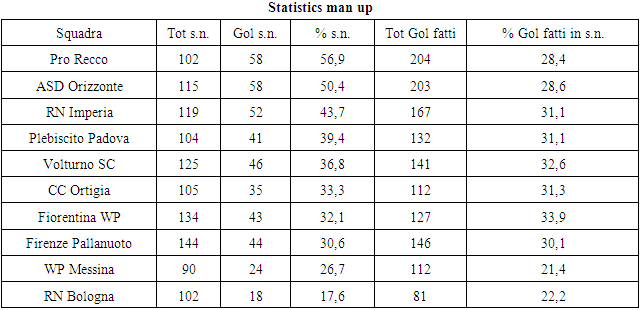 |
| |
|
Table 2
 |
| |
|
Table 3
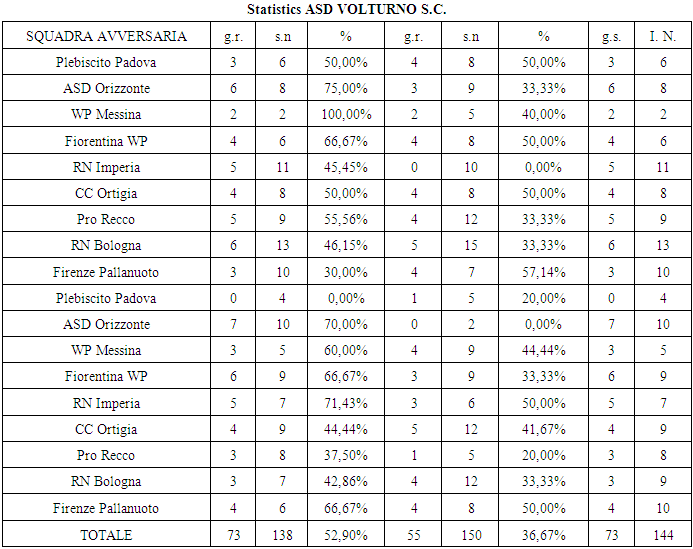 |
| |
|
 | Graphic 1 |
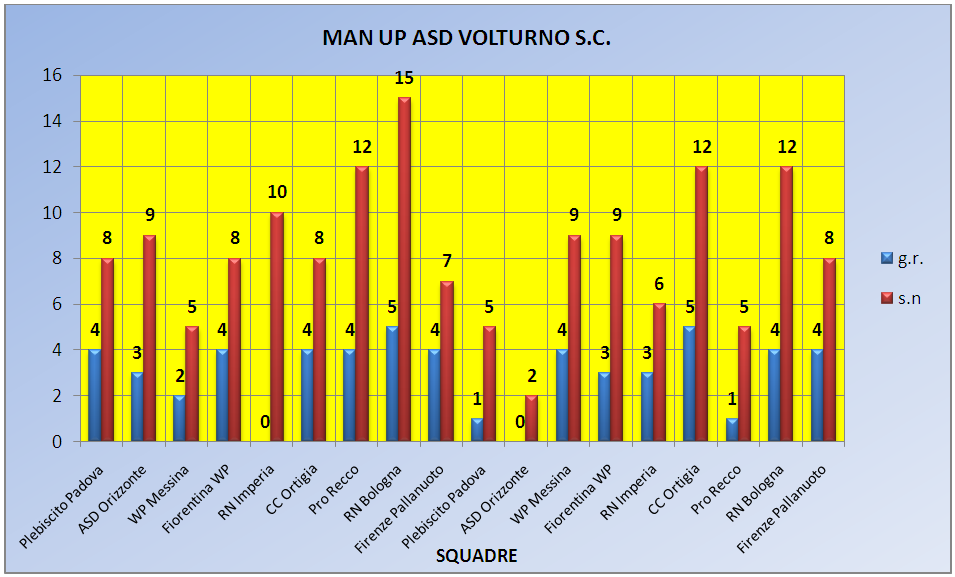 | Graphic 2 |
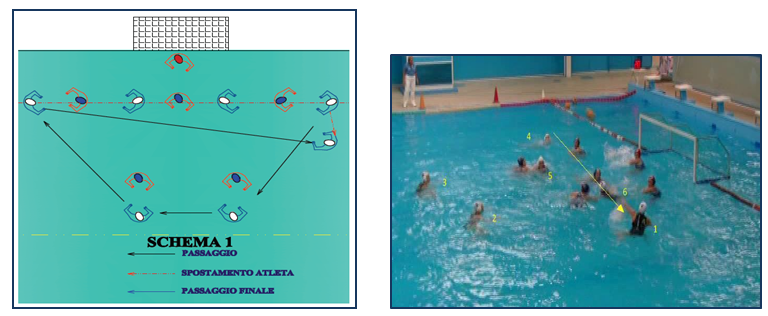 | Figure 1. Design of pattern named «schema 1» & Figure 2. Pattern «schema1»Screenshot |
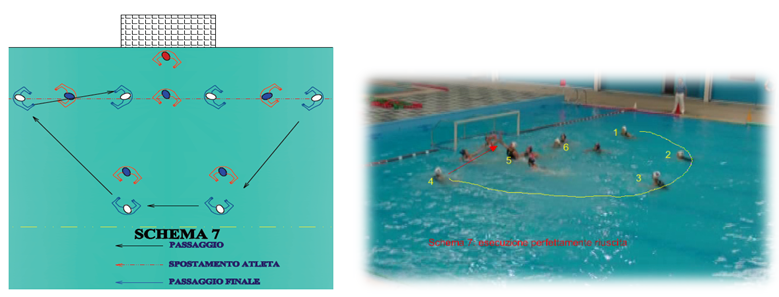 | Figure 3. Design of pattern named «schema 7» & Figure 4. Pattern «schema7»Screenshot |
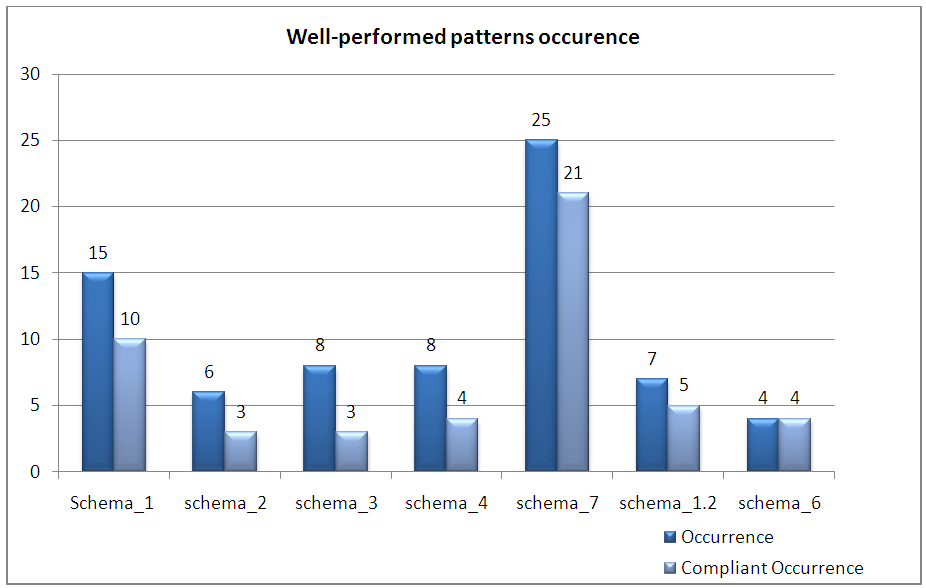 | Graphic 3 |
 | Graphic 4 |
Table 4
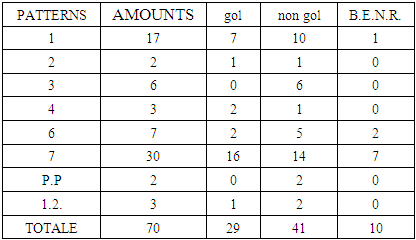 |
| |
|
Table 5
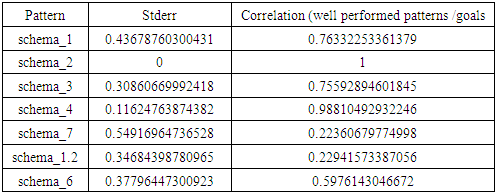 |
| |
|
5. Conclusions
The results obtained demonstrated a general effectiveness of tactical patterns when they are well executed.There are, however, significant differences in the correlation coefficients of the various applied patterns.In order to give greater weight to the study of the effectiveness of the proposed patterns, the research should be expanded by evaluating the adversary variable and thus having a more consistent data base in order to establish a direct, apparent and general relationship between the calculated coefficient and the effectiveness of patterns.The research team is aware of the internal validity of this type of qualitative analysis but can be used by other teams with the necessary modifications.The results of the analysis surely represent a valuable support for the coach, in order to perfect the team's specific training in the following season.
References
| [1] | Hughes, M., Franks, I., (2008). Notational Analysis of Sport: Systems for Better Coaching and Performance in Sport, Routledge. |
| [2] | Napolitano, S. (2014). Cliff diving: water impact and video-analysis. Journal of Physical Education and Sport, vol. 14; p. 93-97, ISSN: 2247-8051, doi:DOI:10.7752/jpes.2014.01015; © JPES. |
| [3] | Napolitano, S. (2015). Performance and correct posture: study in water polo women. Journal of Physical Education and Sport ® (JPES), 15(3), Art 57, pp. 384 - 390., 2015 online ISSN: 2247 - 806X; p-ISSN: 2247 – 8051; ISSN - L = 2247 - 8051 © JPES. |
| [4] | Napolitano, S. (2015). Use of video analysis in youth football. Journal of Physical Education and Sport ® (JPES), 14(4), Art 74, pp. 488 - 492, 2014 online ISSN: 2247 - 806X; p-ISSN: 2247 – 8051; ISSN - L = 2247 - 8051 © JPES. |
| [5] | Napolitano, S. (2016). The use of video analysis for self-assessment in aerobics. Journal of Physical Education and Sport ® (JPES), 16(4), Art 192, pp. 1207 - 1210, 2016 online ISSN: 2247 - 806X; p-ISSN: 2247 – 8051; ISSN - L = 2247 - 8051 © JPES. |
| [6] | Napolitano, S., Di Tore, P.A., De Miro, C., Raiola, G. (2012). Technical analysis in high diving. Buletin Stiintific - Universitatea din Pitesti. Seria Educatie Fizica si Sport, vol. 16; p. 96-99, ISSN:1453-1194, doi: 10.7752. |
| [7] | Napolitano, S., Tursi, D. (2013). The evaluation of the tactic in women's water polo: the experience of a team in the Italian championship premier league. Buletin Stiintific - Universitatea din Pitesti. Seria Educatie Fizica si Sport, vol. 17, p. 36-40, ISSN: 1453-1194, doi: 10.7752. |
| [8] | Raiola, G., Parisi, F., Napolitano, S. (2014). Sports skills in youth volleyball by video analysis teaching method. Procedia: social & behavioral sciences, vol. 117; p. 436-441, ISSN: 1877-0428. |
| [9] | Schmidt, R, Wrisberg, C. (2008). Motor learning and Performance, Human Kinetics. |
| [10] | Tursi, D., Napolitano, S., Di Tore, P. A., Raiola, G. (2012). Evaluation of influence of ball handling on swimming intensity in female water polo. Buletin Stiintific - Universitatea din Pitesti. Seria Educatie Fizica si Sport, vol. 16, p. 99-103, ISSN: 1453-1194, doi: 10.7752. |
| [11] | Tursi, D., Napolitano, S., Raiola, G. (2013). Assessment the technical execution in archery through video analysis. Buletin Stiintific - Universitatea din Pitesti. Seria Educatie Fizica si Sport, vol. 17, p. 41-43, ISSN: 1453-1194, doi: 10.7752. |









 Abstract
Abstract Reference
Reference Full-Text PDF
Full-Text PDF Full-text HTML
Full-text HTML



